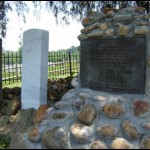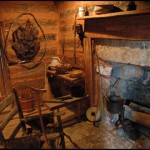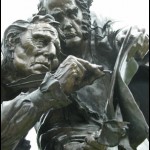All Things Cherokee, has tons of interesting articles, interviews, reviews, etc. covering a wide range of topics. From history to sports, and everything in between, if you want to learn more about Cherokee history, genealogy, and culturethis the place to do it. The articles are broken down into subject sections — Genealogy, History, Culture, and Travel. Which subject interests you most?
Cherokee Genealogy Articles
 Cherokee Tribal Enrollment FAQ
Cherokee Tribal Enrollment FAQ
Joining the tribe is a common goal among Cherokee genealogy hobbyists. Well, first of all, did you know there are actually three federally-recognized Cherokee tribes? These tribes are the Cherokee Nation, the Eastern Band of Cherokee Indians, and the United Keetoowah Band… [Read More]
 Blood Quantum – Why It Matters, Why It Shouldn’t
Blood Quantum – Why It Matters, Why It Shouldn’t
“You’re an Indian? What part?” That’s the universal question many mixed-blood American Indians are asked every day. How many times have you mentioned in passing that you are Cherokee to find your conversation interrupted by intrusive questions… [Read More]
 I Know I’m Cherokee, But How Do I Prove It?
I Know I’m Cherokee, But How Do I Prove It?
It is one thing to know you are Cherokee, but it is quite another to “prove” it. This article helps guide you to the records that can help with that elusive proof… [Read More]
 Genealogy Vs. Genetics
Genealogy Vs. Genetics
As technology improves, it becomes more and more possible to use genetic testing to understand your family’s genealogy, but there are still some major limitations. This article explores the pros and cons of genetic testing… [Read More]
 How to Use the All Things Cherokee Query Boards
How to Use the All Things Cherokee Query Boards
This article details the features and benefits of the FREE Cherokee Genealogy Queries section… [Read More]
Cherokee History Articles
 Cherokee Phoenix: The First American Indian Newspaper
Cherokee Phoenix: The First American Indian Newspaper
On February 21, 1828 the first issue of the Cherokee Phoenix was published. The paper was bilingual, printed in both the Cherokee syllabary and English. The Cherokee syllabary was developed by Sequoyah and introduced to the Cherokee people in 1821. Within just a few months, many Cherokee could read and write in their native language… [Read More]
 Trail of Tears National Historic Trail Video
Trail of Tears National Historic Trail Video
May 2013 marks the 175th anniversary of the tragedy known as the Trail of Tears. Tens of thousands of Cherokee (as well as Creek, Choctaw, Chickasaw, and Seminole) were rounded up from their homes by the US army, and sent to stockade camps where they would wait for their forced journey west to begin… [Read More]
 Andrew Jackson – The Worst President The Cherokee Ever Met
Andrew Jackson – The Worst President The Cherokee Ever Met
Many polls and studies rank Andrew Jackson in or near the top 10 best presidents. However, to many Cherokees Andrew Jackson is without a doubt the worst US president… [Read More]
 Chief John Ross (1790-1866)
Chief John Ross (1790-1866)
In 1828 the Cherokee elected it’s first Principal Chief. John Ross was elected and held the position until his death 1866… [Read More]
 Factionalism, Fighting and the Tragedy of the Trail
Factionalism, Fighting and the Tragedy of the Trail
The Trail of Tears was not only a tragedy when considering the lives lost, but the forced removal also served to divide the Cherokee tribe into factions, divisions which would remain for decades… [Read More]
 Sequoyah – Man of Many Words
Sequoyah – Man of Many Words
The Cherokee syllabary is the only alphabet developed by a single person. That man, Sequoyah, worked for many years developing the characters. Each of the 85 characters Sequoyah created stands for a syllable in the Cherokee language… [Read More]
 Nancy Ward: Beloved Woman of the Cherokee
Nancy Ward: Beloved Woman of the Cherokee
For her bravery Nancy Ward was bestowed with the title of Ghigua. The Ghigua, or Beloved Woman of the Cherokee, was a prestigious title given to extraordinary women by the Cherokee clans… [Read More]
 Ned Christie – Cherokee Outlaw?
Ned Christie – Cherokee Outlaw?
Many history books depict Ned Christie as a “Cherokee outlaw” but to the Cherokee, Ned Christie is a martyr, a symbol of white encroachment and racism… [Read More]
 Rachel C. Eaton – Cherokee Woman, Historian, and Educator
Rachel C. Eaton – Cherokee Woman, Historian, and Educator
Rachel C. Eaton is believed to be the first Oklahoma Indian woman to receive a Ph.D., and the first woman county superintendent of schools in Oklahoma. Rachel C. Eaton was Cherokee, and she dedicated her life to history and education… [Read More]
 Stand Watie – Leader and Survivor
Stand Watie – Leader and Survivor
Stand Watie was an influential member of the Cherokee Nation and a Brigadier General of the Confederacy during the Civil War… [Read More]
 Wilma Mankiller
Wilma Mankiller
Wilma Mankiller was the first woman to be elected Principal Chief of the Cherokee Nation and an inspiring Cherokee woman and leader… [Read More]
 The Trail of Tears
The Trail of Tears
In late May 1838, five days before the deadline for voluntary removal, the U.S. Government began the process of forcibly removing the Cherokee people from their ancestral lands… [Read More]
Cherokee Culture Articles
 Cherokee National Holiday
Cherokee National Holiday
To celebrate the September 6, 1839 signing of the Cherokee Constitution, the Cherokee Nation hosts Cherokee National Holiday every year on Labor Day weekend… [Read More]
 Cherokees in the NFL
Cherokees in the NFL
Did you know that there was a Cherokee playing in the 2008, 2011, and 2014 Super Bowl games? Did you know a Cherokee founded the Houston Oilers (now Tennessee Titans) team? Learn all about the Cherokees who’ve taken part in the NFL… [Read More]
 Online Course ‘Native Peoples of Oklahoma’ Offered for Free
Online Course ‘Native Peoples of Oklahoma’ Offered for Free
The University of Oklahoma is offering a free online course focused on contemporary cultural values and political relationships of the Native American tribes of Oklahoma… [Read More]
 Are You Ready for Some Stickball?
Are You Ready for Some Stickball?
In centuries past Stickball was used as a way of resolving disputes. Today Stickball is a recreational activity, all in good fun, though it’s still a fairly rough game… [Read More]
 Martha Berry: Cherokee Beadwork Artist
Martha Berry: Cherokee Beadwork Artist
An interview with renown Cherokee beadwork artist and Cherokee National Living Treasure Martha Berry… [Read More]
 The Indian Arts and Crafts Act of 1990 and What It Means to You?
The Indian Arts and Crafts Act of 1990 and What It Means to You?
Before you buy or sell Indian art you need to be aware of the Indian Arts and Crafts Act of 1990… [Read More]
 Wes Studi: An Exclusive Interview with Cherokee Actor
Wes Studi: An Exclusive Interview with Cherokee Actor
An exclusive interview with the talented Cherokee actor Wes Studi… [Read More]
 Will Rogers – The Cherokee Kid
Will Rogers – The Cherokee Kid
Will Rogers, a Cherokee, would go on to become a Broadway star, a popular humorist, star of over 70 Hollywood films, author of six books and over 4,000 syndicated newspaper columns, a radio commentator, and even host of the 6th Annual Academy Award Ceremony in 1934… [Read More]
Cherokee Travel Articles
 Cherokee, North Carolina
Cherokee, North Carolina
Nestled in the Great Smoky range of the Appalachian Mountains, the Qualla Boundary, with its capital in Cherokee, North Carolina, encompasses over 56,000 acres of land in western North Carolina and eastern Tennessee, and is home to the Eastern Band of Cherokee Indians… [Read More]
 Cherokee Female Seminary, Tahlequah, Oklahoma
Cherokee Female Seminary, Tahlequah, Oklahoma
On May 7, 1851, the Cherokee Female Seminary was opened to students. This was one of the first schools for women west of the Mississippi River and was funded entirely by the Cherokee Nation… [Read More]
 Cherokee Heritage Center, Park Hill, Oklahoma
Cherokee Heritage Center, Park Hill, Oklahoma
The Cherokee Heritage Center is a non-profit historical society and museum founded in 1962 to preserve the historical and cultural artifacts, language, and traditional crafts of the Cherokee… [Read More]
 Cherokee Nation Capitol Building, Tahlequah, Oklahoma
Cherokee Nation Capitol Building, Tahlequah, Oklahoma
Today, the Capitol Building stands as a symbol of the strength and resilience of the Cherokee Nation, the second largest Indian tribe with about 300,000 tribal citizens… [Read More]
 Cherokee Nation Headquarters, Tahlequah, Oklahoma
Cherokee Nation Headquarters, Tahlequah, Oklahoma
The Cherokee Nation Headquarters Complex sits on the south side of Tahlequah and houses the main offices for the Cherokee Nation government… [Read More]
 Cherokee Nation Supreme Court Building, Tahlequah, Oklahoma
Cherokee Nation Supreme Court Building, Tahlequah, Oklahoma
The Cherokee Nation Supreme Court Building is the oldest public building in Indian Territory, present-day Oklahoma. It was constructed in 1844 to house the Cherokee Supreme Court… [Read More]
 Cherokee Trail of Tears Commemorative Park, Hopkinsville, Kentucky
Cherokee Trail of Tears Commemorative Park, Hopkinsville, Kentucky
The Cherokee Trail of Tears Commemorative Park in Hopkinsville, Kentucky is one of only a few documented campsites along the Trail of Tears… [Read More]
 Chief Vann’s House, Georgia
Chief Vann’s House, Georgia
This “showplace of the Cherokee Nation” is one of the best-preserved Cherokee plantation homes. Built by James Vann in 1804, the two-story mansion was the finest in the Cherokee Nation… [Read More]
 Chota, Tennessee
Chota, Tennessee
Along with Tanasi, Chota was one of the two Overhill towns recognized as a “capital” of the Cherokee Nation throughout the 1700s. For many years Chota was known as a beloved peace town… [Read More]
 Clingmans Dome, Tennessee
Clingmans Dome, Tennessee
Clingmans Dome towers at 6,643 feet and stands as the highest point in the Smoky Mountains National Park and the highest point along the Appalachian Trail. The Cherokee consider it a sacred place… [Read More]
 Dahlonega, Georgia
Dahlonega, Georgia
In 1828, gold was discovered near present-day Dahlonega, Georgia. This was the first major gold rush in the United States. Unfortunately, for the Cherokee, the gold was discovered on Cherokee land… [Read More]
 Duwali Monument, Texas
Duwali Monument, Texas
This stone marks the location of the Battle of Neches (1839) in which hundreds of Texas troops attacked an Indian village. Over 100 Indians were killed, among them Cherokee Chief Duwali (Chief Bowles)… [Read More]
 Dwight Mission, Oklahoma
Dwight Mission, Oklahoma
In it’s original location near Russellville, Arkansas, Dwight Mission was the first American mission to the Native Americans established west of the Mississippi River. In 1830, the mission opened in its present location… [Read More]
 Fort Gibson, Oklahoma
Fort Gibson, Oklahoma
Fort Gibson was built as a western outpost in Indian Territory to rest the growing tension between the Osage and the Cherokees. In 1838-1839, however, the fort took on a new role as a terminus for the Trail of Tears… [Read More]
 Fort Loudoun State Historic Park, Tennessee
Fort Loudoun State Historic Park, Tennessee
Fort Loudoun was built in 1756 by the British during the French and Indian War. Its close proximity to several Overhill Cherokee towns also helped foster an alliance between the Cherokee and the British. Unfortunately, this alliance was short-lived… [Read More]
 Fort Marr Blockhouse, Tennessee
Fort Marr Blockhouse, Tennessee
Fort Marr was built in 1814 as a supply depot for Andrew Jackson’s campaigns against the Creek Indians. It was regarrissoned in 1837 for troops managing the Cherokee removal… [Read More]
 Fort Smith National Historic Site, Arkansas
Fort Smith National Historic Site, Arkansas
Fort Smith was established to keep peace between the Osage and those Cherokee who were migrating west. In 1838, the fort was a key stop along the Trail of Tears, marking entry into Indian Territory for those who took the water route… [Read More]
 George M. Murrell Historic House, Park Hill, Oklahoma
George M. Murrell Historic House, Park Hill, Oklahoma
The Murrell House was built around 1845 for George Murrell, a wealthy Virginia merchant, and his wife Minerva Ross, niece of Principal Chief John Ross. Today the Murrell house is the only plantation home which still remains in Oklahoma… [Read More]
 Horseshoe Bend National Military Park, Alabama
Horseshoe Bend National Military Park, Alabama
The Battle of Horseshoe Bend was fought between the Red Stick Creeks on one side, and the United States forces and Indian allies (including the Cherokee) under General Andrew Jackson… [Read More]
 Kituwah Mound, North Carolina
Kituwah Mound, North Carolina
Kituhwa Mound is a sacred and incredibly historic site to the Cherokee. Archaeologists date the site back to nearly 10,000 years ago… [Read More]
 Lookout Mountain, Georgia
Lookout Mountain, Georgia
At Chattanooga the Cumberland Mountains and Tennessee River meet in a dramatic landscape of towering cliffs and valleys. It was this very aspect of the landscape which appealed to Dragging Canoe who moved his band of Chickamauga Cherokee to this area… [Read More]
 Nancy Ward’s Gravesite, Tennesseee
Nancy Ward’s Gravesite, Tennesseee
Nancy Ward “Nanye-hi” was a Cherokee woman born in the late 1730s. She was bestowed with the title of Ghigau (Beloved Woman), a great honor among the Cherokee, for exhibiting bravery in battle… [Read More]
 New Echota Historic Site, Georgia
New Echota Historic Site, Georgia
The city of New Echota was established in 1825 as the capital of the Cherokee Nation and it would remain so until 1838 with start of the Trail of Tears. The Treaty of New Echota, which ceded the Cherokee Nation and initiated Cherokee removal was signed here in 1835… [Read More]
 Oconaluftee Indian Village, Cherokee, North Carolina
Oconaluftee Indian Village, Cherokee, North Carolina
The Oconaluftee Indian Village was opened in 1952 as a living history museum of Cherokee culture operated by the Cherokee Historical Association. It functions as an authentic replica of a Cherokee village circa 1750… [Read More]
 Cherokee Female Seminary Columns, Park Hill, Oklahoma
Cherokee Female Seminary Columns, Park Hill, Oklahoma
On May 7, 1851 the Cherokee Female Seminary was opened to students. This was one of the first schools for women west of the Mississippi River and was funded entirely by the Cherokee Nation… [Read More]
 The Passage, Chattanooga, Tennessee
The Passage, Chattanooga, Tennessee
The Passage is the nation’s largest public art project celebrating Cherokee history and culture. It was opened to the public in May 2005 as part of an overall effort to redevelop the Chattanooga riverfront… [Read More]
 Pea Ridge National Military Park, Arkansas
Pea Ridge National Military Park, Arkansas
The Battle of Pea Ridge was the first battle of the Civil War in which Indian troops participated. Stand Watie commanded the 2nd Cherokee Mounted Rifles and in 1864 Watie was promoted to Brigadier General, making him the highest ranking Indian in the Confederate Army… [Read More]
 Red Clay State Historic Park, Tennessee
Red Clay State Historic Park, Tennessee
From 1832 until 1838 the Cherokee Nation council met at Red Clay. The location of Red Clay was chosen because of its proximity to Blue Hole Spring, an underground spring… [Read More]
 Ross Landing, Chattanooga, Tennessee
Ross Landing, Chattanooga, Tennessee
In 1816, John Ross, later elected Principal Chief, established a trading post in present-day Chattanooga and the spot soon became known as Ross Landing… [Read More]
 Saline Courthouse, Oklahoma
Saline Courthouse, Oklahoma
In the 1880s the Cherokee Nation constructed a set of nine uniform district courthouses. The Saline Courthouse was built in 1884 and is the only one of the nine courthouses still standing… [Read More]
 Sequoyah’s Birthplace Memorial, Tennessee
Sequoyah’s Birthplace Memorial, Tennessee
Sequoyah was born in the 1770s in the Cherokee village of Tuskegee on the Tennessee River. Unfortunately, Tuskegee was inundated with water in 1979 with the creation of Tellico Lake. This museum is very near the old location… [Read More]
 Sequoyah’s Cabin, Oklahoma
Sequoyah’s Cabin, Oklahoma
In 1829, Sequoyah and several thousand other Cherokee were forced to move from Arkansas territory to Indian Territory. He built this cabin near present-day Sallisaw, Oklahoma. The cabin still stands, and is preserved within a stone building on its original site… [Read More]
 Tahlonteeskee, Oklahoma
Tahlonteeskee, Oklahoma
The Tahlonteeskee settlement was established in 1827 as the seat of Cherokee government in Indian Territory. This makes it the oldest capital in Oklahoma, and a cherished site of Cherokee history… [Read More]
 Tanasi Memorial, Tennessee
Tanasi Memorial, Tennessee
Along with neighboring Chota, Tanasi was one of the two Overhill towns recognized as a “capital” of the Cherokee Nation during the 1700s. It is also known for being the namesake for the state of Tennessee… [Read More]
 Trail of Tears State Park, Cape Girardeau, Missouri
Trail of Tears State Park, Cape Girardeau, Missouri
The Trail of Tears State Park is located on the site where nine groups of Cherokees crossed the Mississippi River in harsh winter conditions along the Trail of Tears… [Read More]
 Treaty of Holston Park, Knoxville, Tennessee
Treaty of Holston Park, Knoxville, Tennessee
In 1791 the Treaty of Holston was signed in an effort to “reestablishing peace and friendship” between the Cherokee and the United States and to reestablish the boundaries between the two… [Read More]
 The Treaty Sculpture, Nacogdoches, Texas
The Treaty Sculpture, Nacogdoches, Texas
During the Texas Revolution Sam Houston needed a guarantee of Indian neutrality so he forged a treaty with Chief Bowles, Duwali, a Cherokee chief secured to the Indians 1.5 million acres of land in east Texas… [Read More]
 Veteran Warrior’s Memorial, Tahlequah, Oklahoma
Veteran Warrior’s Memorial, Tahlequah, Oklahoma
The Cherokee Warrior Memorial is a veteran’s memorial located on the grounds of the Cherokee Nation headquarters… [Read More]
 Will Rogers Birthplace, Oologah, Oklahoma
Will Rogers Birthplace, Oologah, Oklahoma
On November 4, 1879, William Penn Adair Rogers was born in this house in Oologah, Cherokee Nation, Indian Territory. Rogers would go on to become a Broadway star, a popular humorist, star of over 70 Hollywood films, author of six books and over 4,000 syndicated newspaper columns, a radio commentator, and even host of the 6th Annual Academy Award Ceremony in 1934… [Read More]
 Will Rogers Memorial, Claremore, Oklahoma
Will Rogers Memorial, Claremore, Oklahoma
Will Rogers, a Cherokee, would go on to become a Broadway star, a popular humorist, star of over 70 Hollywood films, author of six books and over 4,000 syndicated newspaper columns, a radio commentator, and even host of the 6th Annual Academy Award Ceremony in 1934…… [Read More]